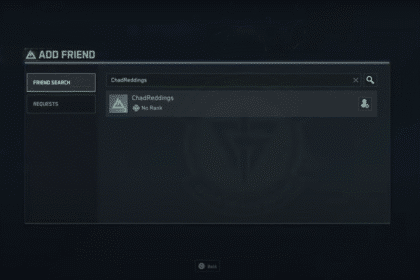With the recent release of The Last of Us Part 1 on Steam, gamers left and right are finally having the time of their lives scraping the bottom of the barrel by figuring out ways how to get their frames to a smooth and silky number twenty-four, just like in the Netflix series!
Now if you’re part of the unfortunate group of people who happen to have computers that rival NASA’s in terms of performance but can’t get a decent experience out of the port, stick around and check the best optimization settings for performance to run the game without having to worry about losing your mind.
Best Optimization Settings for Performance on PC | The Last of Us Part 1
One of the first things you’re going to be fiddling with outside of the game is your graphics settings, so go to your Start icon and browse for the executable file through your preferences.
When you choose the correct program simply choose High performance next and save the changes you’ve made. Make sure that Hardware-accelerated GPU scheduling is turned on as well!

For your NVIDIA GPU you can focus on keeping your Low Latency Mode turned on while also locking your FPS.
If you have a monitor that has more frames than your eyes can keep up with then just match that according to your refresh rate to avoid any stuttering. Remember to enable G-SYNC for both windowed and full-screen modes!
You can find these settings under the Display tab.

On a quick side note, if you’re ever playing the game on a portable device like a laptop, make sure that you’re always plugged in while also having your preferred power plan set to High performance.
Most laptop designs have an automatic power-saving feature that bogs down the performance you’re getting whenever you’re out and about to preserve whatever battery life you have left.

Hey look at that, you made it to the Display tab! For now, you can copy the settings you see on the image provided above, make sure that you’re playing in your native resolution, and have your V-Sync turned off.
It’s a single-player game and not a battle royale so there’s no need to get competitive. If you’re struggling with keeping a stable FPS you can lock it to match the settings you kept on your control panel.

You can keep your resolution scaling setting to quality, the scaling is quite decent and isn’t too much of a performance hog. It’ll be more problems dealing with the slightly worse image quality you’re going to get if you set it to either balanced or worse, performance.

For effects keep your field of view set to default as you will lose more frames the higher you set it, camera shake is completely up to you but you might as well do yourself a favor and turn off motion blur if you’re the kind who has eyes that easily water.
The rest you can get away with worrying about any consequences, make the experience even better by keeping chromatic aberration intensity turned off.

Moving on to graphics, start by lowering your animation quality to medium if you ever have any issues with your CPU. Anything higher than a medium for draw distance will only draw less FPS for you along with Level of Detail.
You can set this too low as you won’t be looking at everything that’s flying your way, saving you a few more frames in the process.

For texture, you can go from Medium to High, just as long as your VRAM can handle it. It’s a little bit different for Ambient Shadows Quality.
However, if you set this anywhere lower than quarter resolution objects in the game will have a slight tendency to look like Play-Doh. But if you’re fine with that then kudos to you for not letting graphics get in your way!
Apply this to SSAO as well while you’re at it.

Keep bounced lighting along with other Screen Space Reflection settings turned off to save up on frames as every surface you cast a light on will cost you and your pc more processing power.
For post-processing effects feel free to leave everything turned off including bloom resolution if you enjoy the idea of seeing more things without the Depth of Field getting in the way.
With those settings, you just might be able to run the game with your old GTX 980!
Of course, you can still do side-by-side comparisons if you’re struggling between quality and performance but this is the closest you can set things to without getting a PS5!
ALSO READ: The Last of Us Part 1: Fix Fatal Error, Crashes, Black Screen & Infinite Loading










